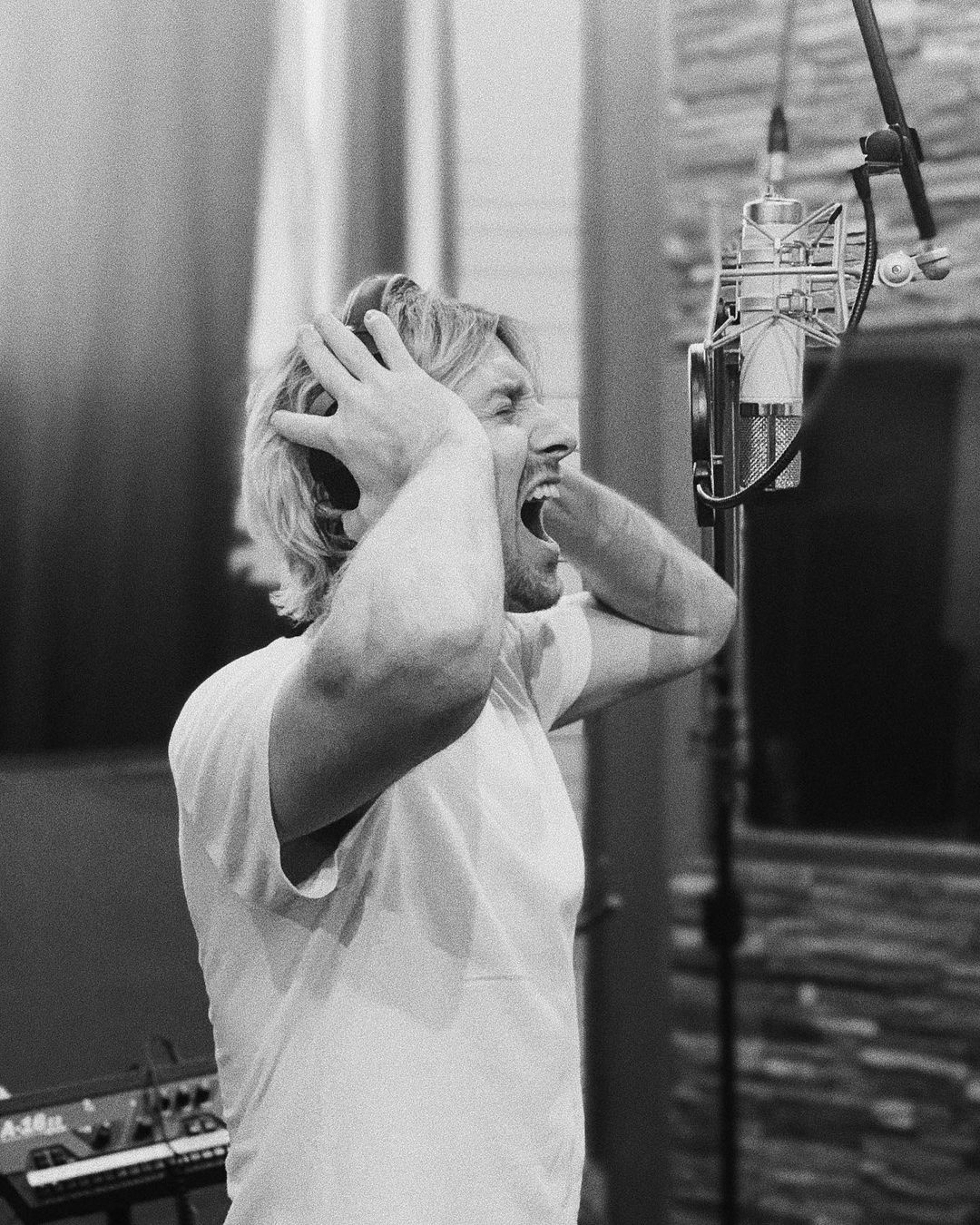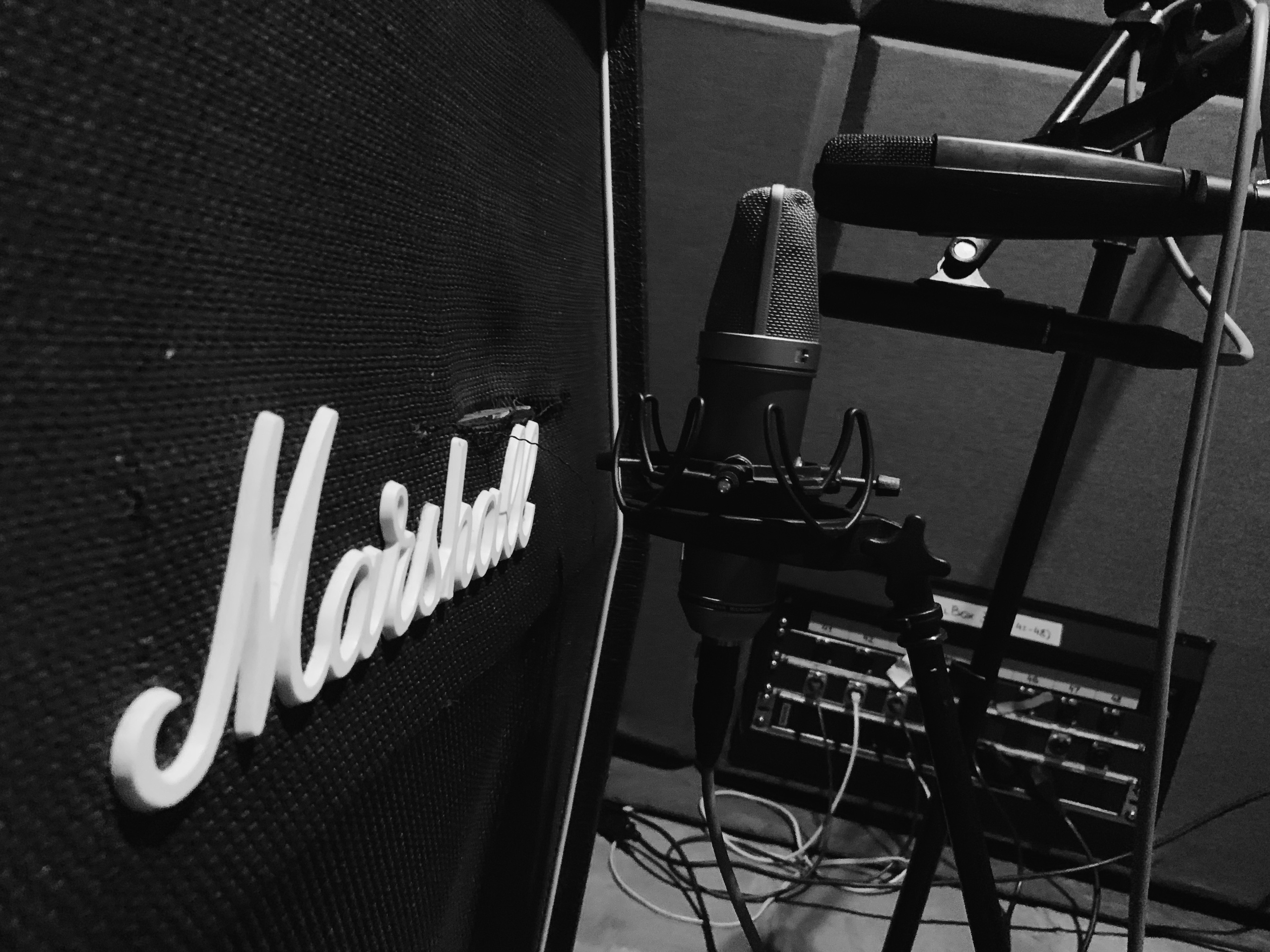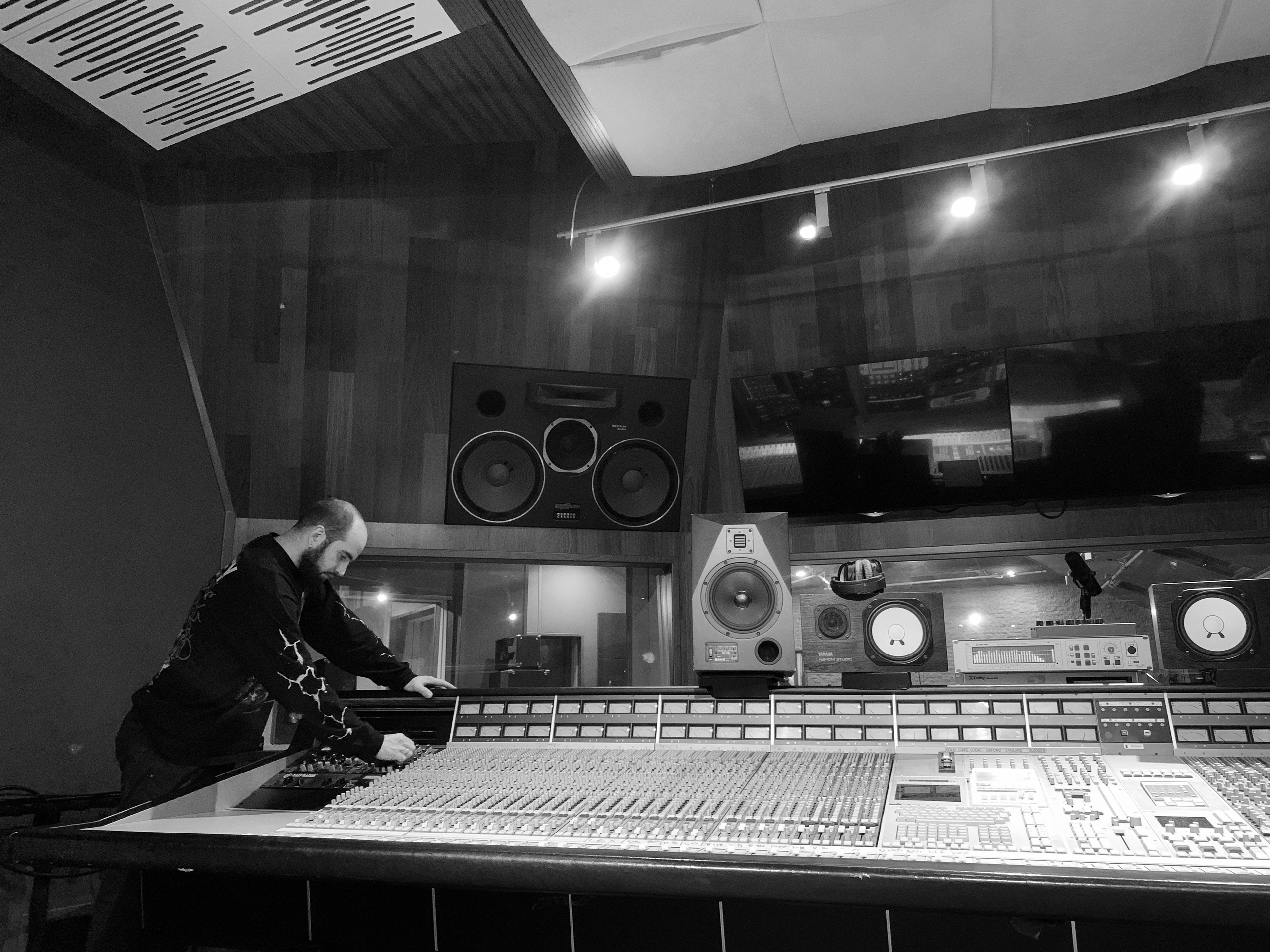Смоляное чучелко — 23 (2022). Album Recording. Equipment
The main difference between this album and the previous one is that it was recorded entirely live (except for the vocals). We arrived at the M.A.M.A studio, set up, tuned everything, and ran through the first two tracks three times each. We had some tea, then finished the last track, immediately picked the best takes, and I recorded guitar doubles over them. That’s it.
vocals
Later, I recorded the vocals in the same studio, but it didn’t quite work out — maybe because of the mixing console (which is pretty old there), Maybe because of the microphone (which is too expensive there), or maybe I just sang poorly. So the second time, I recorded the vocals at DTH. I also recorded the backing vocals there.

microphone
GoodFly 251
guitar
The backline on the recording was almost the same as on the first album, with the only difference being that this time, Ilya brought me a Marshall guitar cabinet with Vintage 30 speakers from DTH. After that, I ended up with Kurt Cobain’s live rig from ‘93–‘94. I had been working towards this for a long time, but when it finally happened, it almost felt wrong… But in any case, it sounded awesome. It’s not about being the “heaviest” or the “most aggressive” sound you can achieve. It’s more like the sound of a live pig being hung on a hook and slowly cut open. Technically, a guitar isn’t supposed to make that kind of sound, because it doesn’t really resemble a typical guitar tone. But if someone doesn’t like it, they can always listen to something else. The guitar sound was captured both close to the speaker and from a distance of two meters in the room.

guitar
- Fender Mustang
effect pedals
- BOSS DS-1
- EHX Polychorus
amplifiers
- Mesa boogie studio preamp .22 & Crest Audio 4801 + Marshall 1960 Vintage AV 4×12 (Vintage 30)
microphones
close mics
- Neumann U67
- Sennheiser MD 421
- Beyerdynamic M160
room mics
- Vintage Ribbon RCA (2 pcs.)
cables
- Evidence Audio The Forte
- Evidence Audio The Lyric HG
drums
We put the drum kit together once again from the same pile that’s always lying in the corner of the studio. It’s kind of like how we used to put together our ski gear in gym class as kids — one boot from one pair, the other from another, mismatched poles, and completely different skis. On the album, the drums sound exactly like they looked. Which is to say — awesome, of course… how else? No one fixed anything, moved anything around, or added anything later. I’m a huge fan of Albini’s drum sound, so I absolutely wore Ilya out talking about it. But he’s already on the same page. So the mics were lying on the floor (if you know, you know).

overheads
- Stereo Pair: COLES 4038 + Mono: GoodFly 251
Front Microphone
- Ribbon Stereo Microphone in Blumlein Configuration: AEA R88 MK2
Ride Mic
- Neumann KM84
Neumann TLM 170 (outside)
- AKG D112 (inside) + Built-in Dynamic Microphone (inside)
Snare Drum
- Shure SM57 (top & bottom)
Tom-Toms
- Sennheiser MD 421 (top), AKG 414 B-ULS (bottom)
Hi-Hat
- Hypercardioid Ribbon Microphone: Beyerdynamic M160
Room Mics
- AKG C 460 B (2 pcs. on the floor, 3–4 meters away)
bass
I don’t have much to say about the bass. I gave the bassist a RAT, but he gave it back later. What he had under his feet — I have no idea. There was a bassist. We don’t deny that. But he self-destructed.

amplifiers
- Ampeg SVT Classic head + Ampeg SVT Classic 8×10 cab
microphones
- Neumann U87 + линия
mixing
We mixed the album at Vintage Records. I had wanted to try mixing there for a while because it’s the only studio I know that has fully analog equipment. So we mixed the album on analog gear — no digital at all. A console that needs to warm up, weird noises in the speakers from all that old hardware, and so on. It was the first time any of us had been there, including Ilya, so it was a bit nerve-wracking, but I think we handled it well. We wrapped it up in two sessions. We left all the settings on the console overnight to avoid recalling everything, and in the morning, we finished it up. In my opinion, we kind of messed up the balance on two tracks (pushed the guitar too high), but that’s the risk of analog mixing. We knew what we were getting into. Overall, it turned out pretty good. DIY.

mastering
The mastering was done again at Chicago Mastering Service in Chicago, with the same guy, Matthew J Barnhart. There’s nothing to explain there — they’ll explain everything to you themselves. No questions about this stage.
distribution
Still CD Baby. Two versions of the album: For all streaming services — CD quality (16-bit, 44.1 kHz files). For Apple Music and iTunes — Apple Digital Masters (24-bit audio files).